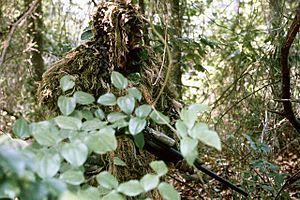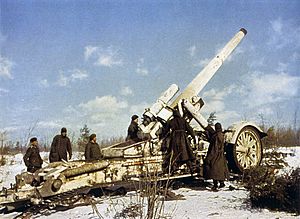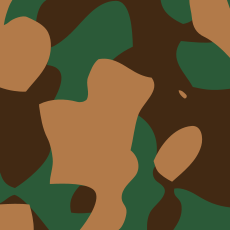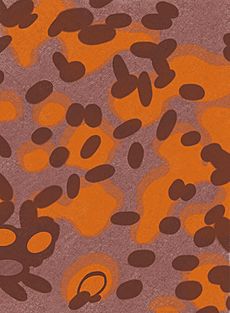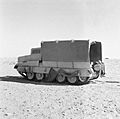Military camouflage facts for kids
Camouflage is a type of clothing, fabric covering, or painted pattern used by militaries and armies to make it harder to see soldiers and weapons such as artillery guns and military vehicles. Camouflage clothes, fabric coverings, and paint use a colored pattern of several colors that is designed to blend in with the surroundings. Camouflage patterns are also used for hunting clothes.
Types of camouflage patterns
Camouflage patterns used in desert areas, are beige and light brown. Camouflage patterns used in forested areas, mix different green and brown colors. Camouflage patterns used in urban areas mix grey, white, and black colors. Camouflage for snowy areas use white colors to blend in with the snow.
History
Camouflage became an important part of modern military tactics when the accuracy of rifles and cannons improved at the end of the 1800s. But armies continued to use bright colours and designs until the 20th century. During World War II camouflage became a common feature in military uniforms. As well, many military vehicles such as planes and trucks were painted with camouflage patterns.
Different countries use different types of military camouflage patterns.
Images for kids
-
A-7D Corsairs in a disruptive pattern, countershaded with white, on a disruptively painted surface, Thailand, 1972.
-
Croatian army uniform (right) had by 2008 diverged from the former Yugoslavian army pattern, apparently for cultural reasons such as political identification.
-
Finnish field gun during the Winter War, showing improvised snow camouflage made from bedsheets and whitewash
-
The Canadian Forces were the first army to issue pixellated digital camouflage for all units with their disruptively patterned CADPAT.
-
A Swedish Visby class corvette, exhibiting both conventional visual camouflage and an anti-radar (stealth) design
-
95th Rifles Regiment (1802–1816) reenactors in rifle green uniform
-
The Relief of Ladysmith by John Henry Frederick Bacon shows the khaki uniforms used by the British in the Second Boer War.
-
Abbott Thayer's drawings in his 1902 patent for countershading ships
-
A British Hawker Hurricane in brown and green "temperate land" scheme
-
British Admiralty dazzle camouflage of World War I
-
A Ukrainian Su-25 painted with earth colours above and sky blue below
-
Edward Wadsworth: Dazzle-ships in dry dock at Liverpool, 1919, National Gallery of Canada, Ottawa, Ontario.
See also
 In Spanish: Camuflaje militar para niños
In Spanish: Camuflaje militar para niños


